2024 CFA Program Curriculum Level I Box Set Volumes 1 – 6 by CFA Institute, ISBN-13: 978-1953337672
Original price was: $200.00.$29.99Current price is: $29.99.
Trustpilot
2024 CFA Program Curriculum Level I Box Set Volumes 1 – 6 by CFA Institute, ISBN-13: 978-1953337672
[PDF eBook eTextbook] – Available Instantly
- Publisher: Wiley; 1st edition (May 23, 2023)
- Language: English
- ISBN-10: 1953337678
- ISBN-13: 978-1953337672
Discover the official resource for success on the 2024 CFA Level I exam. Get your copy of the CFA® Program Curriculum now.
The 2024 CFA Program Curriculum Level I Box Set contains the content you need to perform well on the Level I CFA exam in 2024. Designed for candidates to use for exam preparation and professional reference purposes, this set includes the full official curriculum for Level I and is part of the larger CFA Candidate Body of Knowledge (CBOK).
Covering all ten core topics found on the Level I exam, the 2024 CFA Program Curriculum Level I Box Set helps you:
- Develop critical knowledge and skills essential in the industry.
- Learn from financial thought leaders.
- Access market-relevant instruction.
The set also features practice questions to assist with your mastery of key terms, concepts, and formulas. Volumes include:
- Volume 1: Quantitative Methods
- Volume 2: Economics and Financial Statement Analysis
- Volume 3: Financial Statement Analysis and Corporate Issuers
- Volume 4: Corporate Issuers, Equity Investments, and Fixed Income
- Volume 5: Fixed Income, Derivatives, Alternative Investments, and Portfolio Management
- Volume 6: Portfolio Management and Ethical and Professional Standards
Indispensable for anyone preparing for the 2024 Level I CFA exam, the 2024 CFA Program Curriculum Level I Box Set is a must-have resource for those seeking the foundational skills required to become a Chartered Financial Analyst®.
Table of Contents:
Cover
Copyright Page
Table of Contents
2024 CFA Program Curriculum Level 1 Volume 1: Quantitative Methods, Economics
Title Page
Table of Contents
How to Use the CFA Program Curriculum
Errata
Designing Your Personal Study Program
CFA Institute Learning Ecosystem (LES)
Prerequisite Knowledge
Feedback
Quantitative Methods
Rates and Returns
Learning Outcomes
1. Introduction
2. Interest Rates and Time Value of Money
2.1. Determinants of Interest Rates
3. Rates of Return
3.1. Holding Period Return
3.2. Arithmetic or Mean Return
3.3. Geometric Mean Return
3.4. The Harmonic Mean
4. Money-Weighted and Time-Weighted Return
4.1. Calculating the Money Weighted Return
4.1.1. Money-Weighted Return for a Dividend-Paying Stock
4.1.2. Time-Weighted Returns
4.1.2.1. Computing Time-Weighted Returns
5. Annualized Return
5.1. Non-annual Compounding
5.2. Annualizing Returns
5.3. Continuously Compounded Returns
6. Other Major Return Measures and Their Applications
6.1. Gross and Net Return
6.2. Pre-Tax and After-Tax Nominal Return
6.3. Real Returns
6.4. Leveraged Return
Practice Problems
Solutions
Time Value of Money in Finance
Learning Outcomes
1. Introduction
2. Time Value of Money in Fixed Income and Equity
2.1. Fixed-Income Instruments and the Time Value of Money
2.1.1. Discount Instruments
2.1.2. Coupon Instrument
2.1.3. Annuity Instruments
2.2. Equity Instruments and the Time Value of Money
3. Implied Return and Growth
3.1. Implied Return for Fixed-Income Instruments
3.2. Equity Instruments, Implied Return, and Implied Growth
4. Cash Flow Additivity
4.1. Implied Forward Rates Using Cash Flow Additivity
4.2. Forward Exchange Rates Using No Arbitrage
4.3. Option Pricing Using Cash Flow Additivity
Practice Problems
Solutions
Statistical Measures of Asset Returns
Learning Outcomes
1. Introduction
2. Measures of Central Tendency and Location
2.1. Measures of Central Tendency
2.1.1. The Arithmetic Mean
2.1.2. The Sample Mean
2.1.3. The Median
2.1.4. The Mode
2.2. Dealing with Outliers
2.3. Measures of Location
2.3.1. Quartiles, Quintiles, Deciles, and Percentiles
2.3.2. Quantiles in Investment Practice
3. Measures of Dispersion
3.1. The Range
3.2. Mean Absolute Deviations
3.3. Sample Variance and Sample Standard Deviation
3.3.1. Sample Variance
3.3.2. Sample Standard Deviation
3.4. Downside Deviation and Coefficient of Variation
3.4.1. Downside Deviation
3.4.2. Coefficient of Variation
4. Measures of Shape of a Distribution
4.1.
4.1.1. Skewness
4.1.2. Kurtosis
5. Correlation between Two Variables
5.1. Scatter Plot
5.2. Covariance and Correlation
5.3. Properties of Correlation
5.4. Limitations of Correlation Analysis
Practice Problems
Solutions
Probability Trees and Conditional Expectations
Learning Outcomes
1. Introduction
2. Expected Value and Variance
3. Probability Trees and Conditional Expectations
3.1. Total Probability Rule for Expected Value
4. Bayes’ Formula and Updating Probability Estimates
4.1. Bayes’ Formula
Practice Problems
Solutions
Portfolio Mathematics
Learning Outcomes
1. Introduction
2. Portfolio Expected Return and Variance of Return
2.1. Covariance
2.2. Correlation
3. Forecasting Correlation of Returns: Covariance Given a Joint Probability Function
4. Portfolio Risk Measures: Applications of the Normal Distribution
References
Practice Problems
Solutions
Simulation Methods
Learning Outcomes
1. Introduction
2. Lognormal Distribution and Continuous Compounding
2.1. The Lognormal Distribution
2.2. Continuously Compounded Rates of Return
3. Monte Carlo Simulation
4. Bootstrapping
Practice Problems
Solutions
Estimation and Inference
Learning Outcomes
1. Introduction
2. Sampling Methods
2.1. Simple Random Sampling
2.2. Stratified Random Sampling
2.3. Cluster Sampling
2.4. Non-Probability Sampling
2.5. Sampling from Different Distributions
3. Central Limit Theorem and Inference
3.1. The Central Limit Theorem
3.2. Standard Error of the Sample Mean
4. Bootstrapping and Empirical Sampling Distributions
Practice Problems
Solutions
Hypothesis Testing
Learning Outcomes
1. Introduction
2. Hypothesis Tests for Finance
2.1. The Process of Hypothesis Testing
2.1.1. Stating the Hypotheses
2.1.2. Identify the Appropriate Test Statistic and Distribution
2.1.3. Specify the Level of Significance
2.1.4. State the Decision Rule
3. Tests of Return and Risk in Finance
3.1. Test Concerning Differences between Means with Dependent Samples
3.2. Test Concerning the Equality of Two Variances
4. Parametric versus Nonparametric Tests
4.1. Uses of Nonparametric Tests
4.2. Nonparametric Inference: Summary
Practice Problems
Solutions
Parametric and Non-Parametric Tests of Independence
Learning Outcomes
1. Introduction
2. Tests Concerning Correlation
2.1. Parametric Test of a Correlation
2.2. Non-Parametric Test of Correlation: The Spearman Rank Correlation Coefficient
3. Tests of Independence Using Contingency Table Data
Practice Problems
Solutions
Simple Linear Regression
Learning Outcomes
1. Introduction
2. Estimation of the Simple Linear Regression Model
2.1. Introduction to Linear Regression
2.2. Estimating the Parameters of a Simple Linear Regression
2.2.1. The Basics of Simple Linear Regression
2.2.2. Estimating the Regression Line
2.2.3. Interpreting the Regression Coefficients
2.2.4. Cross-Sectional versus Time-Series Regressions
3. Assumptions of the Simple Linear Regression Model
3.1. Assumption 1: Linearity
3.2. Assumption 2: Homoskedasticity
3.3. Assumption 3: Independence
3.4. Assumption 4: Normality
4. Hypothesis Tests in the Simple Linear Regression Model
4.1. Analysis of Variance
4.1.1. Breaking Down the Sum of Squares Total into Its Components
4.2. Measures of Goodness of Fit
4.3. Hypothesis Testing of Individual Regression Coefficients
4.3.1. Hypothesis Tests of the Slope Coefficient
4.3.2. Hypothesis Tests of the Intercept
4.3.3. Hypothesis Tests of Slope When the Independent Variable Is an Indicator Variable
4.3.4. Test of Hypotheses: Level of Significance and p-Values
5. Prediction in the Simple Linear Regression Model
5.1. ANOVA and Standard Error of Estimate in Simple Linear Regression
5.2. Prediction Using Simple Linear Regression and Prediction Intervals
6. Functional Forms for Simple Linear Regression
6.1. The Log-Lin Model
6.2. The Lin-Log Model
6.3. The Log-Log Model
6.4. Selecting the Correct Functional Form
Practice Problems
Solutions
Introduction to Big Data Techniques
Learning Outcomes
1. Introduction
2. How Is Fintech used in Quantitative Investment Analysis?
2.1. Big Data
2.1.1. Sources of Big Data
2.1.2. Big Data Challenges
3. Advanced Analytical Tools: Artificial Intelligence and Machine Learning
4. Tackling Big Data with Data Science
4.1. Data Processing Methods
4.2. Data Visualization
4.3. Text Analytics and Natural Language Processing
Practice Problems
Solutions
Appendices A-E
1. Appendices A-E
Economics
The Firm and Market Structures
Learning Outcomes
1. Introduction
2. Profit Maximization: Production Breakeven, Shutdown and Economies of Scale
2.1. Profit-Maximization, Breakeven, and Shutdown Points of Production
2.2. Breakeven Analysis and Shutdown Decision
2.3. The Shutdown Decision
2.4. Economies and Diseconomies of Scale with Short-Run and Long-Run Cost Analysis
2.4.1. Short- and Long-Run Cost Curves
2.4.2. Defining Economies of Scale and Diseconomies of Scale
3. Introduction to Market Structures
3.1. Analysis of Market Structures
3.1.1. Factors That Determine Market Structure
3.1.2. Characteristics of Market Structure
4. Monopolistic Competition
4.1. Demand Analysis in Monopolistically Competitive Markets
4.2. Supply Analysis in Monopolistically Competitive Markets
4.3. Optimal Price and Output in Monopolistically Competitive Markets
4.4. Long-Run Equilibrium in Monopolistic Competition
5. Oligopoly
5.1. Oligopoly and Pricing Strategies
5.2. Demand Analysis and Pricing Strategies in Oligopoly Markets
5.3. The Cournot Assumption
5.4. The Nash Equilibrium
5.5. Oligopoly Markets: Optimal Price, Output, and Long-Run Equilibrium
5.5.1. Optimal Price and Output in Oligopoly Markets
5.5.2. Factors Affecting Long-Run Equilibrium in Oligopoly Markets
6. Determining Market Structure
6.1. Econometric Approaches
6.2. Simpler Measures
Practice Problems
Solutions
Understanding Business Cycles
Learning Outcomes
1. Introduction
2. Overview of the Business Cycle
2.1. Phases of the Business Cycle
2.1.1. Types of Cycles
2.1.2. Practical Issues
2.1.3. Four Phases of the Cycle
2.2. Leads and Lags in Business and Consumer Decision Making
2.3. Market Conditions and Investor Behavior
2.3.1. Recovery Phase
2.3.2. Expansion Phase
2.3.3. Slowdown Phase
2.3.4. Contraction Phase
3. Credit Cycles
3.1. Applications of Credit Cycles
3.2. Consequences for Policy
4. Economic Indicators over the Business Cycle
4.1. The Workforce and Company Costs
4.2. Fluctuations in Capital Spending
4.3. Fluctuations in Inventory Levels
4.4. Economic Indicators
4.5. Types of Indicators
4.6. Composite Indicators
4.7. Leading Indicators
4.8. Using Economic Indicators
4.9. Other Composite Leading Indicators
4.10. Surveys
4.11. The Use of Big Data in Economic Indicators
4.12. Nowcasting
4.13. GDPNow
Practice Problems
Solutions
Fiscal Policy
Learning Outcomes
1. Introduction
2. Introduction to Monetary and Fiscal Policy
3. Roles and Objectives of Fiscal Policy
3.1. Roles and Objectives of Fiscal Policy
3.1.1. Fiscal Policy and Aggregate Demand
3.1.2. Government Receipts and Expenditure in Major Economies
3.2. Deficits and the National Debt
4. Fiscal Policy Tools
4.1. The Advantages and Disadvantages of Different Fiscal Policy Tools
4.2. Modeling the Impact of Taxes and Government Spending: The Fiscal Multiplier
4.3. The Balanced Budget Multiplier
5. Fiscal Policy Implementation
5.1. Deficits and the Fiscal Stance
5.2. Difficulties in Executing Fiscal Policy
Practice Problems
Solutions
Monetary Policy
Learning Outcomes
1. Introduction
2. Role of Central Banks
2.1. Roles of Central Banks and Objectives of Monetary Policy
2.2. The Objectives of Monetary Policy
3. Monetary Policy Tools and Monetary Transmission
3.1. Open Market Operations
3.2. The Central Bank’s Policy Rate
3.3. Reserve Requirements
3.4. The Transmission Mechanism
4. Monetary Policy Objectives
4.1. Inflation Targeting
4.2. Central Bank Independence
4.3. Credibility
4.4. Transparency
4.4.1. The Target
4.4.2. The Main Exceptions to the Inflation-Targeting Rule
4.5. The Bank of Japan
4.6. The US Federal Reserve System
4.6.1. Monetary Policy in Developing Countries
4.7. Exchange Rate Targeting
4.8. Contractionary and Expansionary Monetary Policies and Their Limitations
4.9. What’s the Source of the Shock to the Inflation Rate?
4.10. Limitations of Monetary Policy
4.10.1. Problems in the Monetary Transmission Mechanism
4.10.2. Interest Rate Adjustment in a Deflationary Environment and Quantitative Easing as a Response
4.10.3. Limitations of Monetary Policy: Summary
5. Interaction of Monetary and Fiscal Policy
5.1. The Relationship Between Monetary and Fiscal Policy
5.1.1. Factors Influencing the Mix of Fiscal and Monetary Policy
5.1.2. Quantitative Easing and Policy Interaction
5.1.3. The Importance of Credibility and Commitment
Practice Problems
Solutions
Introduction to Geopolitics
Learning Outcomes
1. Introduction
2. National Governments and Political Cooperation
2.1. State and Non-State Actors
2.2. Features of Political Cooperation
2.2.1. National Security or Military Interest
2.2.2. Economic Interest
2.3. Resource Endowment, Standardization, and Soft Power
2.3.1. Geophysical Resource Endowment
2.3.2. Standardization
2.3.3. Cultural Considerations and Soft Power
2.4. The Role of Institutions
2.5. Hierarchy of Interests and Costs of Cooperation
2.6. Power of the Decision Maker
2.7. Political Non-Cooperation
3. Forces of Globalization
3.1. Features of Globalization
3.2. Motivations for Globalization
3.2.1. Increasing Profits
3.2.1.1. Increasing sales
3.2.1.2. Reducing costs
3.2.2. Access to Resources and Markets
3.2.3. Intrinsic Gain
3.3. Costs of Globalization and Threats of Rollback
3.3.1. Unequal Accrual of Economic and Financial Gains
3.3.2. Lower Environmental, Social, and Governance Standards
3.3.3. Political Consequences
3.3.4. Interdependence
3.4. Threats of Rollback of Globalization
4. International Trade Organizations
4.1. Role of the International Monetary Fund
4.2. World Bank Group and Developing Countries
4.3. World Trade Organization and Global Trade
5. Assessing Geopolitical Actors and Risk
5.1. Archetypes of Country Behavior
5.1.1. Autarky
5.1.2. Hegemony
5.1.3. Multilateralism
5.1.4. Bilateralism
6. The Tools of Geopolitics
6.1. The Tools of Geopolitics
6.1.1. National Security Tools
6.1.2. Economic Tools
6.1.3. Financial Tools
6.2. Multifaceted Approaches
6.3. Geopolitical Risk and Comparative Advantage
7. Geopolitical Risk and the Investment Process
7.1. Types of Geopolitical Risk
7.2. Assessing Geopolitical Threats
7.2.1. Likelihood
7.2.2. Velocity
7.3. Impact of Geopolitical Risk
7.3.1. Scenario Analysis
7.4. Tracking Risks According to Signposts
7.5. Manifestations of Geopolitical Risk
7.6. Acting on Geopolitical Risk
Practice Problems
Solutions
International Trade
Learning Outcomes
1. Introduction
2. Benefits and Costs of Trade
2.1. Benefits and Costs of International Trade
3. Trade Restrictions and Agreements—Tariffs, Quotas, and Export Subsidies
3.1. Tariffs
3.2. Quotas
3.3. Export Subsidies
4. Trading Blocs and Regional Integration
4.1. Types Of Trading Blocs
4.2. Regional Integration
4.2.1. Trade Creation and Diversion
4.2.2. Costs and Benefits of Regional Trading Blocs
4.2.3. Challenges to Deeper Integration
4.2.4. Investment Implications
Practice Problems
Solutions
Capital Flows and the FX Market
Learning Outcomes
1. Introduction
2. The Foreign Exchange Market and Exchange Rates
2.1. Introduction and the Foreign Exchange Market
2.1.1. The FX Market
2.2. Market Participants
2.3. Market Composition
2.4. Exchange Rate Quotations
3. Exchange Rate Regimes: Ideals and Historical Perspective
3.1. The Ideal Currency Regime
3.2. Historical Perspective on Currency Regimes
3.3. A Taxonomy of Currency Regimes
3.3.1. Arrangements with No Separate Legal Tender
3.3.2. Currency Board System
3.3.3. Fixed Parity
3.3.4. Target Zone
3.3.5. Active and Passive Crawling Pegs
3.3.6. Fixed Parity with Crawling Bands
3.3.7. Managed Float
3.3.8. Independently Floating Rates
3.4. Exchange Rates and the Trade Balance: Introduction
4. Capital Restrictions
Practice Problems
Solutions
Exchange Rate Calculations
Learning Outcomes
1. Introduction
2. Cross-Rate Calculations
3. Forward Rate Calculations
3.1. Arbitrage Relationships
3.2. Forward Discounts and Premiums
Practice Problems
Solutions
Glossary
2024 CFA Program Curriculum Level 1 Volume 2: Portfolio Management, Corporate Issuers, Financial Statement Analysis
Title Page
Table of Contents
How to Use the CFA Program Curriculum
Errata
Designing Your Personal Study Program
CFA Institute Learning Ecosystem (LES)
Prerequisite Knowledge
Feedback
Portfolio Management
Portfolio Risk and Return: Part I
Learning Outcomes
1. Introduction
2. Historical Return and Risk
2.1. Nominal Returns of Major US Asset Classes
2.2. Real Returns of Major US Asset Classes
2.3. Nominal and Real Returns of Asset Classes in Major Countries
2.4. Risk of Major Asset Classes
2.5. Risk–Return Trade-off
3. Other Investment Characteristics
3.1. Distributional Characteristics
3.1.1.
3.1.1.1. Skewness
3.1.1.2. Kurtosis
3.2. Market Characteristics
4. Risk Aversion and Portfolio Selection
4.1. The Concept of Risk Aversion
4.1.1. Risk Seeking
4.1.2. Risk Neutral
4.1.3. Risk Averse
4.1.4. Risk Tolerance
5. Utility Theory and Indifference Curves
5.1. Indifference Curves
6. Application of Utility Theory to Portfolio Selection
7. Portfolio Risk & Portfolio of Two Risky Assets
7.1. Portfolio of Two Risky Assets
7.1.1. Portfolio Return
7.1.2. Portfolio Risk
7.1.3. Covariance and Correlation
7.1.4. Relationship between Portfolio Risk and Return
8. Portfolio of Many Risky Assets
8.1. Importance of Correlation in a Portfolio of Many Assets
9. The Power of Diversification
9.1. Correlation and Risk Diversification
9.2. Historical Risk and Correlation
9.3. Historical Correlation among Asset Classes
9.4. Avenues for Diversification
10. Efficient Frontier: Investment Opportunity Set & Minimum Variance Portfolios
10.1. Investment Opportunity Set
10.1.1. Addition of Asset Classes
10.2. Minimum-Variance Portfolios
10.2.1. Minimum-Variance Frontier
10.2.2. Global Minimum-Variance Portfolio
10.2.3. Efficient Frontier of Risky Assets
11. Efficient Frontier: A Risk-Free Asset and Many Risky Assets
11.1. Capital Allocation Line and Optimal Risky Portfolio
11.2. The Two-Fund Separation Theorem
12. Efficient Frontier: Optimal Investor Portfolio
12.1. Investor Preferences and Optimal Portfolios
13. Summary
References
Practice Problems
Solutions
Portfolio Risk and Return: Part II
Learning Outcomes
1. Introduction
2. Capital Market Theory: Risk-Free and Risky Assets
2.1. Portfolio of Risk-Free and Risky Assets
2.1.1. Combining a Risk-Free Asset with a Portfolio of Risky Assets
2.1.2. Does a Unique Optimal Risky Portfolio Exist?
3. Capital Market Theory: The Capital Market Line
3.1. Passive and Active Portfolios
3.2. What Is the “Market”?
3.3. The Capital Market Line (CML)
4. Capital Market Theory: CML – Leveraged Portfolios
4.1. Leveraged Portfolios with Different Lending and Borrowing Rates
5. Systematic and Nonsystematic Risk
5.1. Systematic Risk and Nonsystematic Risk
5.1.1. Pricing of Risk
6. Return Generating Models
6.1. Return-Generating Models
6.1.1. Three-Factor and Four-Factor Models
6.1.2. The Single-Index Model
6.2. Decomposition of Total Risk for a Single-Index Model
6.3. Return-Generating Models: The Market Model
7. Calculation and Interpretation of Beta
7.1. Estimation of Beta
7.2. Beta and Expected Return
8. Capital Asset Pricing Model: Assumptions and the Security Market Line
8.1. Assumptions of the CAPM
8.2. The Security Market Line
8.2.1. Portfolio Beta
9. Capital Asset Pricing Model: Applications
9.1. Estimate of Expected Return
10. Beyond CAPM: Limitations and Extensions of CAPM
10.1. Limitations of the CAPM
10.1.1. Theoretical Limitations of the CAPM
10.1.2. Practical Limitations of the CAPM
10.2. Extensions to the CAPM
10.2.1. Theoretical Models
10.2.2. Practical Models
11. Portfolio Performance Appraisal Measures
11.1. The Sharpe Ratio
11.2. The Treynor Ratio
11.3. M2: Risk-Adjusted Performance (RAP)
11.4. Jensen’s Alpha
12. Applications of the CAPM in Portfolio Construction
12.1. Security Characteristic Line
12.2. Security Selection
12.3. Implications of the CAPM for Portfolio Construction
13. Summary
References
Practice Problems
Solutions
Corporate Issuers
Organizational Forms, Corporate Issuer Features, and Ownership
Learning Outcomes
1. Introduction
2. Organizational Forms of Businesses
2.1. Organizational Forms of Businesses
2.2. Sole Trader or Proprietorship
2.3. Partnerships
2.4. Limited Companies
3. Key Features of Corporate Issuers
3.1. Legal Identity
3.2. Owner–Manager Separation
3.3. Owner/Shareholder Liability
3.4. External Financing
3.5. Taxation
4. Publicly vs. Privately Owned Corporate Issuers
4.1. Exchange Listing, Liquidity, and Price Transparency
4.2. Share Issuance
4.3. Registration and Disclosure Requirements
4.4. Going from Private to Public
4.5. Going from Public to Private
4.6. The Varieties of Corporate Owners
Practice Problems
Solutions
Investors and Other Stakeholders
Learning Outcomes
1. Introduction
2. Financial Claims of Lenders and Shareholders
2.1. Debt Versus Equity
2.1.1. Debt and Equity Claims
2.2. Debt Versus Equity: Risk and Return
2.3. Conflicts of Interest among Lenders and Shareholders
3. Corporate Stakeholders and Governance
3.1. Shareholders versus Stakeholders
3.2. Investors
3.3. Board of Directors
3.4. Managers
3.5. Employees
3.6. Customers
3.7. Suppliers
3.8. Governments
4. Corporate ESG Considerations
4.1. Environmental Factors
4.2. Social Factors
4.3. Governance Factors
4.4. Evaluating ESG-Related Risks and Opportunities
Practice Problems
Solutions
Corporate Governance: Conflicts, Mechanisms, Risks, and Benefits
Learning Outcomes
1. Introduction
2. Stakeholder Conflicts and Management
2.1. Shareholder, Board Director, and Manager Relationships
2.2. Controlling and Minority Shareholder Relationships
2.3. Shareholder versus Creditor Interests
3. Corporate Governance Mechanisms
3.1. Corporate Reporting and Transparency
3.2. Shareholder Mechanisms
3.2.1. Shareholder Meetings
3.2.2. Shareholder Activism
3.2.3. Shareholder Litigation
3.2.4. Corporate Takeovers
3.3. Creditor Mechanisms
3.3.1. Bond Indenture
3.3.2. Creditor Committees
3.4. Board and Management Mechanisms
3.4.1. Audit Committee
3.4.2. Nominating/Governance Committee
3.4.3. Compensation/Remuneration Committee
3.4.4. Additional Committees
3.5. Employee Mechanisms
3.6. Customer and Supplier Mechanisms
3.7. Government Mechanisms
3.7.1. Laws and Regulations
3.7.2. Corporate Governance Codes
4. Corporate Governance Risks and Benefits
4.1. Operational Risks and Benefits
4.2. Legal, Regulatory, and Reputational Risks and Benefits
4.3. Financial Risks and Benefits
Practice Problems
Solutions
Working Capital and Liquidity
Learning Outcomes
1. Introduction
2. Cash Conversion Cycle
3. Liquidity
3.1. Primary Liquidity Sources
3.2. Secondary Liquidity Sources
3.3. Factors Affecting Liquidity: Drags and Pulls
3.4. Measuring and Evaluating Liquidity
4. Managing Working Capital and Liquidity
4.1. Working Capital Management
4.2. Liquidity and Short-Term Funding
Practice Problems
Solutions
Capital Investments and Capital Allocation
Learning Outcomes
1. Introduction
2. Capital Investments
2.1. Going Concern Projects
2.2. Regulatory Compliance Projects
2.3. Expansion of Existing Business
2.4. New Lines of Business and Other Projects
3. Capital Allocation
3.1. Net Present Value (NPV)
3.2. Internal Rate of Return
3.3. Return on Invested Capital
4. Capital Allocation Principles and Pitfalls
4.1. Capital Allocation Principles
4.2. Capital Allocation Pitfalls
4.2.1. Cognitive Errors in Capital Allocation
4.2.2. Behavioral Biases in Capital Allocation
5. Real Options
Practice Problems
Solutions
Capital Structure
Learning Outcomes
1. Introduction
2. The Cost of Capital
3. Factors Affecting Capital Structure
3.1. Determinants of the Amount and Type of Financing Needed
3.1.1. Capital-Intensive Businesses
3.1.2. “Capital-Light” Businesses
3.1.3. Corporate Life Cycle
3.2. Determinants of the Costs of Debt and Equity
3.2.1. Top-Down Factors
3.2.2. Issuer-Specific Factors
4. Modigliani–Miller Capital Structure Propositions
4.1. Capital Structure Irrelevance (MM Proposition I without Taxes)
4.2. Higher Financial Leverage Raises the Cost of Equity (MM Proposition II without Taxes)
4.3. Firm Value with Taxes (MM Proposition II with Taxes)
4.4. Cost of Capital (MM Proposition II with Taxes)
4.5. Cost of Financial Distress
5. Optimal Capital Structure
5.1. Target Weights and WACC
5.2. Pecking Order Theory and Agency Costs
Practice Problems
Solutions
Business Models
Learning Outcomes
1. Introduction
2. Defining the Business Model
2.1. Business Model Features
2.1.1. The Customers and the Market (“Who”)
2.1.2. Product or Service Offering (“What” and Often “Why”)
2.1.3. Channels (“Where”)
2.1.4. Pricing (“How Much”)
2.2. Pricing and Revenue Models
2.3. The Value Proposition (Who + What + Where + How Much)
2.4. Business Organization and Capabilities
3. Business Model Types
3.1. Conventional Business Models
3.2. Business Model Variations
3.3. Business Model Innovation
3.4. Network Effects and Platform Business Models
Practice Problems
Solutions
Financial Statement Analysis
Introduction to Financial Statement Analysis
Learning Outcomes
1. Introduction
2. Financial Statement Analysis Framework
2.1. Articulate the Purpose and Context of the Analysis
2.2. Collect Data
2.3. Process Data
2.4. Analyze/Interpret the Data
2.5. Develop and Communicate Conclusions and Recommendations
2.6. Follow-Up
3. Scope of Financial Statement Analysis
4. Regulated Sources of Information
4.1. International Organization of Securities Commissions
4.2. US Securities and Exchange Commission
4.3. Capital Markets Regulation in Europe
4.4. Financial Notes and Supplementary Schedules
4.5. Business and Geographic Segment Reporting
4.6. Management Commentary or Management’s Discussion and Analysis
4.7. Auditor’s Reports
5. Comparison of IFRS with Alternative Financial Reporting Systems
5.1. Monitoring Developments in Financial Reporting Standards
5.2. New Products or Types of Transactions
5.3. Evolving Standards and the Role of CFA Institute
6. Other Sources of Information
Practice Problems
Solutions
Analyzing Income Statements
Learning Outcomes
1. Introduction
2. Revenue Recognition
2.1. General Principles
2.2. Accounting Standards for Revenue Recognition
3. Expense Recognition
3.1. General Principles
3.2. Capitalization versus Expensing
3.3. Capitalization of Interest Costs
3.4. Capitalization of Internal Development Costs
3.5. Implications for Financial Analysts: Expense Recognition
4. Non-Recurring Items
4.1. Unusual or Infrequent Items
4.2. Discontinued Operations
4.3. Changes in Accounting Policy
4.4. Changes in Scope and Exchange Rates
5. Earnings per Share
5.1. Simple versus Complex Capital Structure
5.2. Basic EPS
5.3. Diluted EPS: The If-Converted Method
5.4. Diluted EPS When a Company Has Convertible Preferred Stock Outstanding
5.5. Diluted EPS When a Company Has Convertible Debt Outstanding
5.6. Diluted EPS: The Treasury Stock Method
5.7. Other Issues with Diluted EPS and Changes in EPS
5.8. Changes in EPS
6. Income Statement Ratios and Common-Size Analysis
6.1. Common-Size Analysis of the Income Statement
6.2. Income Statement Ratios
Practice Problems
Solutions
Analyzing Balance Sheets
Learning Outcomes
1. Introduction
2. Intangible Assets
2.1. Identifiable Intangibles
3. Goodwill
4. Financial Instruments
5. Non-Current Liabilities
5.1. Long-Term Financial Liabilities
5.2. Deferred Tax Liabilities
6. Ratios and Common-Size Analysis
6.1. Common-Size Analysis of the Balance Sheet
6.2. Some interesting general observations can be made from these data:
6.3. Balance Sheet Ratios
Practice Problems
Solutions
Analyzing Statements of Cash Flows I
Learning Outcomes
1. Introduction
2. Linkages between the Financial Statements
2.1. Primary Financial Statements
2.2. Relationship between Financial Statements
2.3. Linkages Between Current Assets and Current Liabilities
3. The Direct Method for Cash Flows from Operating Activities
3.1. Operating Activities: Direct Method
3.1.1. Cash Received From Customers
3.1.2. Cash Paid to Suppliers
3.1.3. Cash Paid to Employees
3.1.4. Cash Paid for Other Operating Expenses
3.1.5. Cash Paid for Interest
3.1.6. Cash Paid for Income Taxes
4. The Indirect Method for Cash Flows from Operating Activities
4.1. Operating Activities: Indirect Method
5. Conversion from the Indirect to Direct Method
5.1. Method to Convert Cash Flow from Indirect to Direct
6. Cash Flows from Investing Activities
6.1. Cash Flows from Investing Activities
7. Cash Flows from Financing Activities
7.1. Cash Flow from Financing activities: Long-Term Debt and Common Stock
7.2. Computing Dividends Paid
8. Differences in Cash Flow Statements Prepared under US GAAP versus IFRS
Practice Problems
Solutions
Analyzing Statements of Cash Flows II
Learning Outcomes
1. Introduction
2. Evaluating Sources and Uses of Cash
2.1.
2.1.1. Step 1. Evaluate the major sources and uses of cash flow
2.1.2. Step 2. Evaluate the primary determinants of operating cash flow
2.1.3. Step 3. Evaluate the primary determinants of investing cash flow
2.1.4. Step 4. Evaluate the primary determinants of financing cash flow
3. Ratios and Common-Size Analysis
4. Free Cash Flow Measures
5. Cash Flow Statement Analysis: Cash Flow Ratios
Practice Problems
Solutions
Analysis of Inventories
Learning Outcomes
1. Introduction
2. Inventory Valuation
3. The Effects of Inflation and Deflation on Inventories, Costs of Sales, and Gross Margin
4. Present
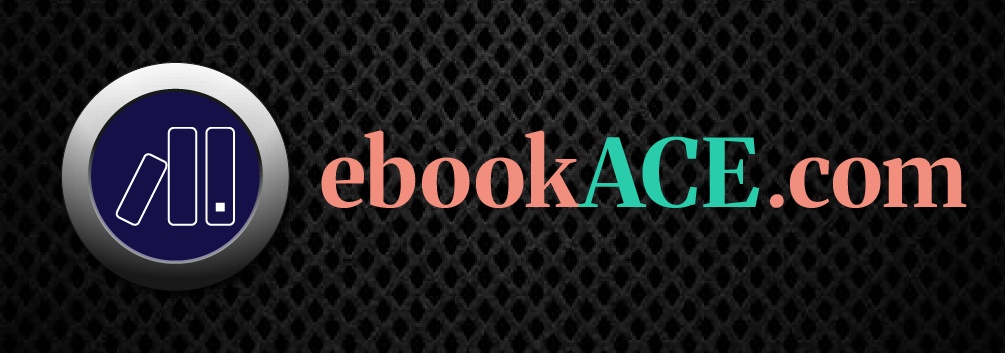
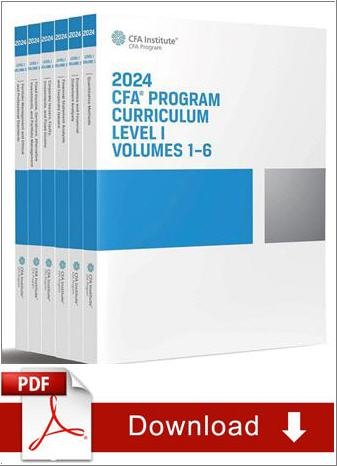
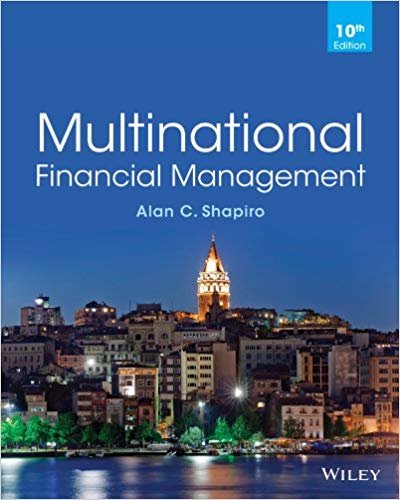
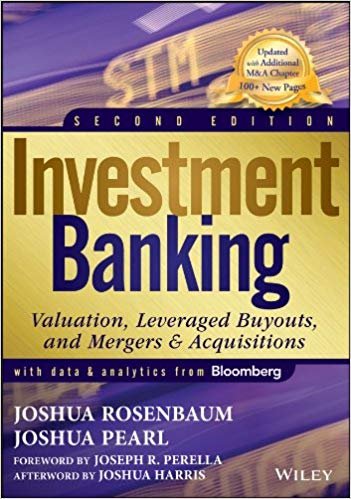
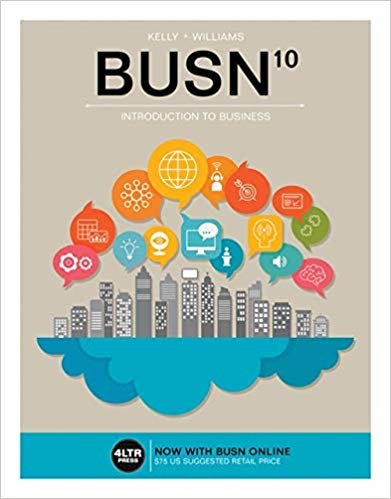
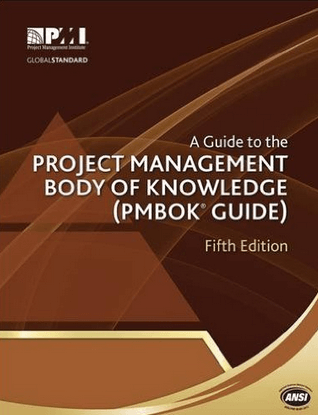

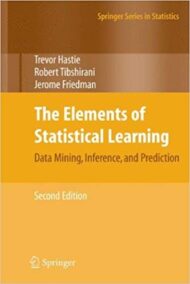
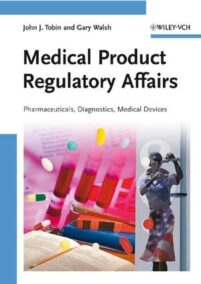



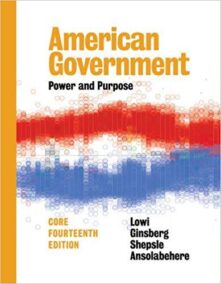















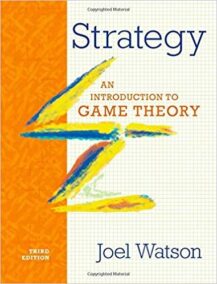
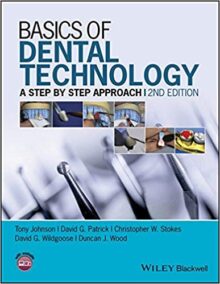

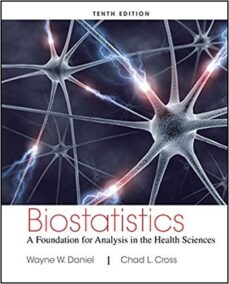

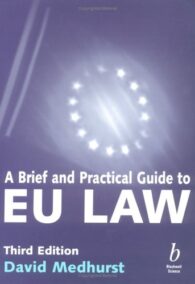
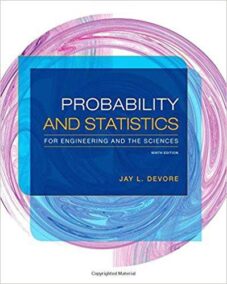
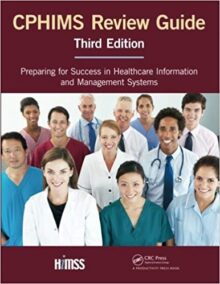


Reviews
There are no reviews yet.